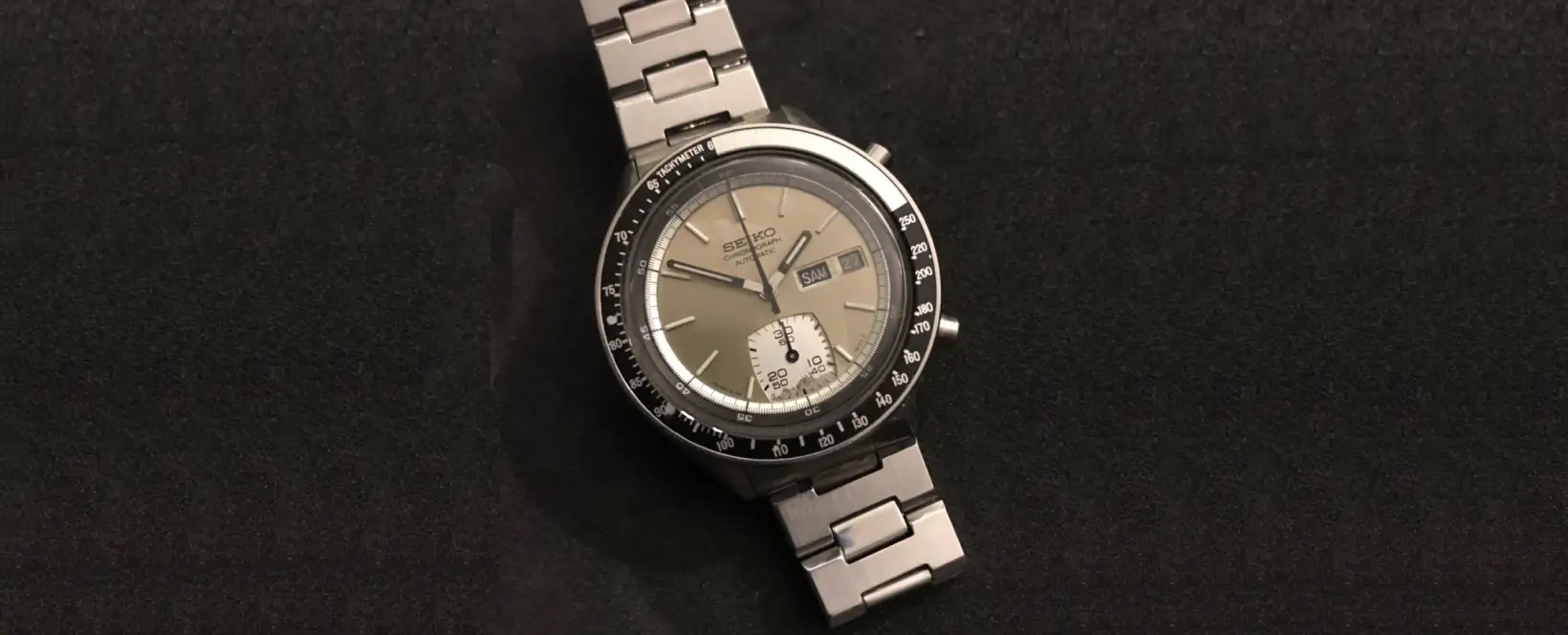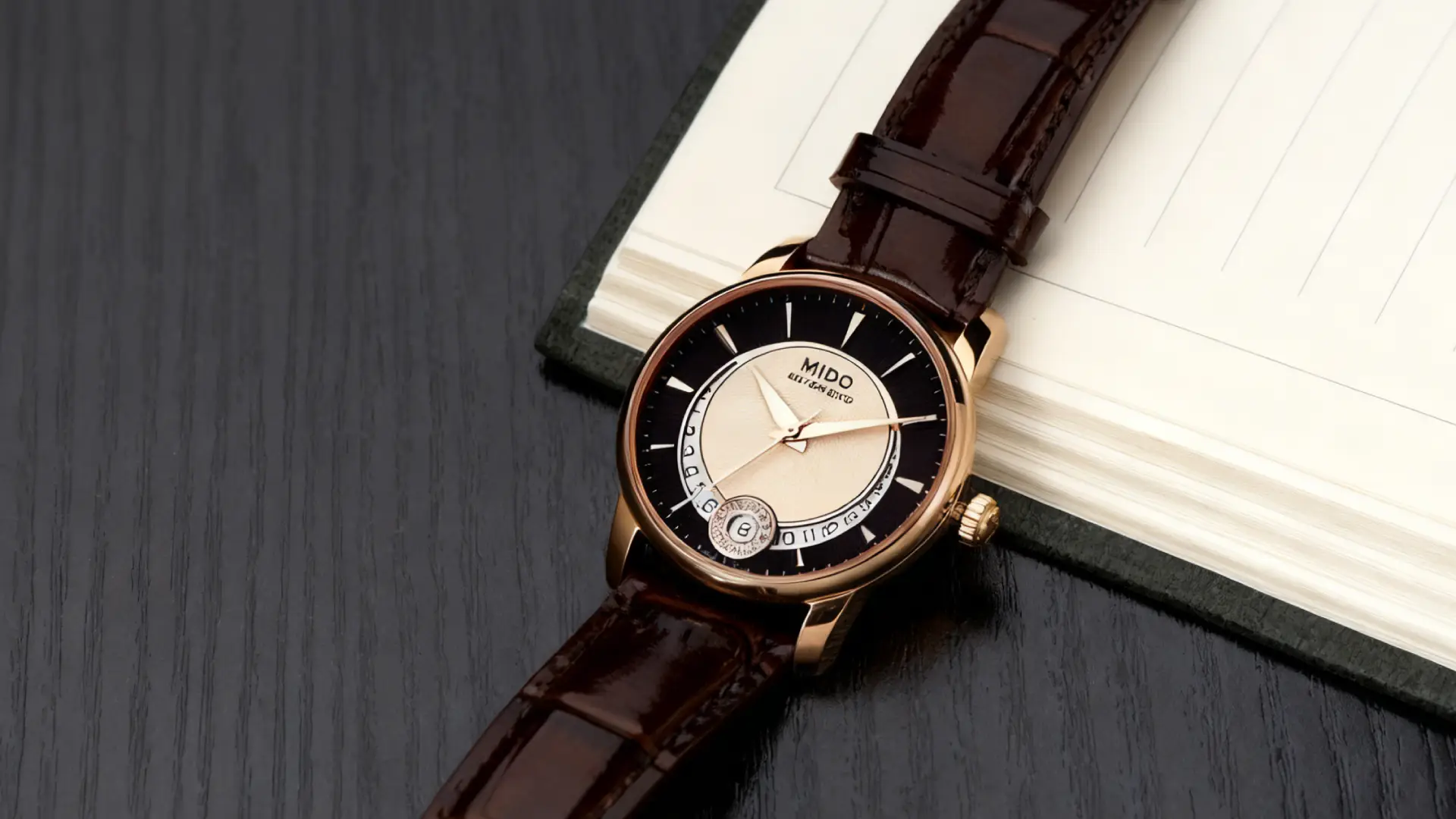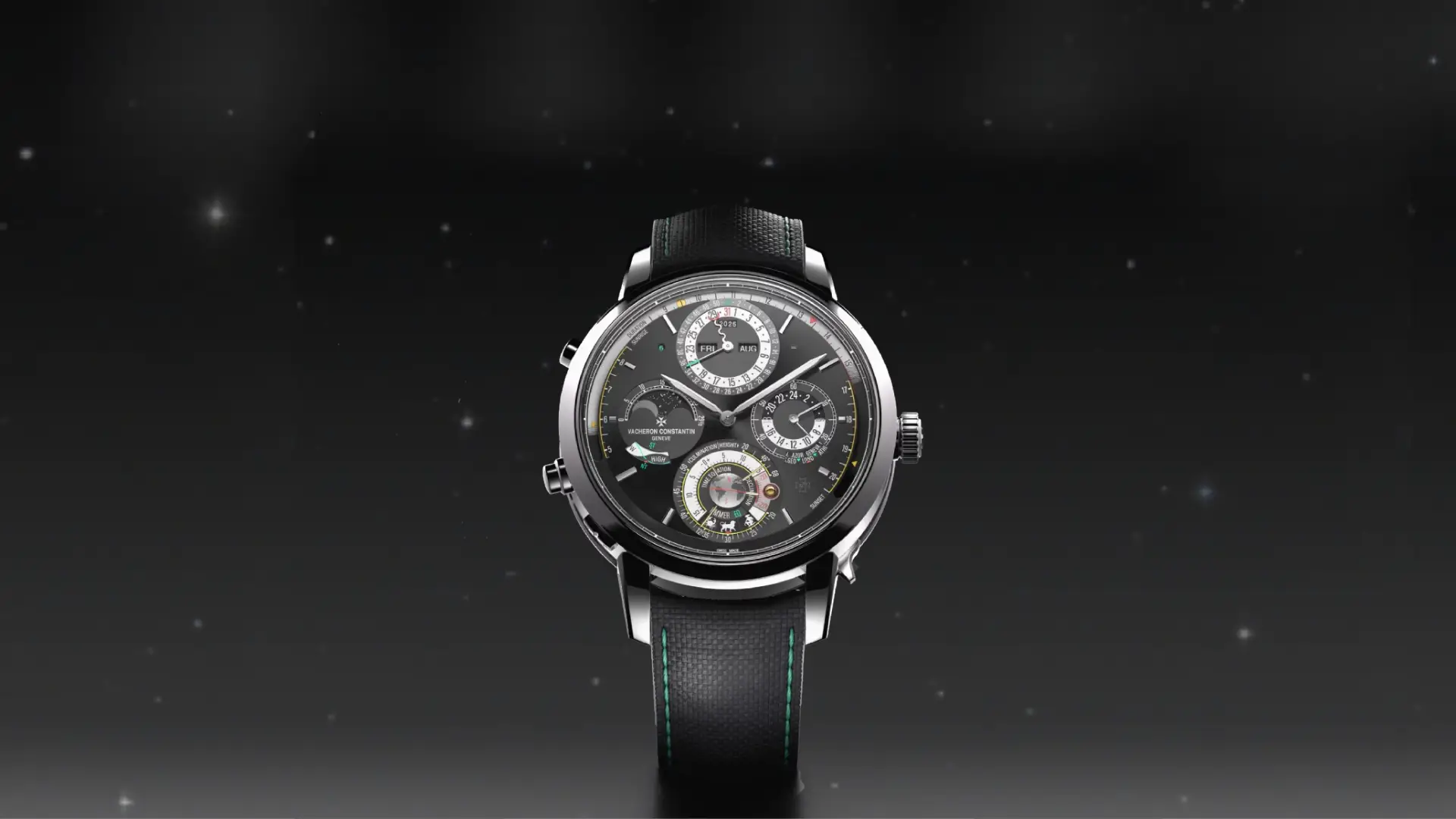Top 3 Discontinued Seiko Vintage Watches to Collect
Watch Guides
2025-08-28Introduction
There’s something truly magnetic about Seiko Vintage Watches. They aren’t merely instruments for telling time—they’re living artifacts of design, craftsmanship, and horological innovation. I still remember the first time I held a Captain Willard: the stainless steel case bore fine scratches that caught the sunlight just so, and the tritium lume on the dial had mellowed from vibrant green to warm amber. It wasn’t wear—it was decades of history etched into metal and dial, a story you could feel with your fingertips.
When I began collecting, I was drawn to discontinued Seiko models not just for nostalgia, but because each watch tells a tale of technical breakthroughs and bold design choices. Take the Seiko 6139—the world’s first integrated automatic chronograph produced in a mass-market watch, predating Swiss counterparts like the Zenith El Primero by three years. Some even left their mark in space history, worn on Skylab missions.
In this article, I’ll share my top 3 discontinued Seiko Vintage Watches—the pieces that shaped my journey as a collector and continue to inspire me every time I strap one on.
Why Seiko Vintage Watches Are Worth Collecting
Seiko is one of the few watch houses that merges Japanese precision with enduring, subtly bold design—often at prices that won’t break the bank. The precision is tangible: cases are polished to 0.01 mm tolerances, lugs are chamfered with exacting care, and dials feature crisp printing that has held up for decades. The quietly cool aesthetic shows in details like asymmetric cushion cases and minimalist bezels, proving that boldness doesn’t need to shout.
What sets Seiko Vintage Watches apart is their tech-meets-history story. The 1969 6139 automatic chronograph introduced a column-wheel + vertical-clutch architecture: a finely tuned gear system that keeps start/stop timing errors to ±1 second per day, outperforming many Swiss contemporaries. Dive models like the 6105 were engineered for real-world duty, with turn-lock crowns, robust shock-resistant cases, and tritium lume built to survive harsh conditions.
The combination of innovation, durability, and lived-in character is why I keep reaching for Seiko on busy weekdays and long weekends alike. It’s not just collecting—it’s wearing a slice of watchmaking history that still feels modern on the wrist. Compared to Swiss peers of the same era, these watches offered incredible value: where a 1970s Omega diver might cost $8,000, a Seiko 6105 could be had for around $2,000, making history and performance remarkably accessible.
My Top 3 Discontinued Seiko Vintage Watches
1. Seiko 6105-8110 Captain Willard - Vintage Dive Watch
![]()
The Seiko 6105-8110, better known as the “Captain Willard,” rose to fame after Martin Sheen wore it in Apocalypse Now (1979), but its history stretches back to the late 1960s. Originally designed as a professional diver’s watch for both civilian and military use, many examples found their way onto the wrists of American soldiers during the Vietnam War.
The watch houses the automatic Caliber 6105B movement, featuring 17 jewels and a 21,600 vph frequency, with later iterations adding a hacking seconds function for precise time setting. Its 44mm asymmetrical cushion case is engineered to protect the crown from shocks, while a 150-meter water resistance rating made it a serious tool watch for its era.
Collectors often confuse the 6105-8110 with the 6105-8009, but the two are distinct: the 8110 has a larger 44mm case compared to the 8009’s 40mm, sports a silver-toned dial rather than black, and features the signature “LOCK →” crown engraving that the 8009 lacks. Despite its bold dimensions, the 8110 wears comfortably; weighing approximately 55 grams including the strap, its curved cushion case allows it to fit like a 42mm watch on wrists measuring 17 to 19 centimeters. The short lug-to-lug distance further enhances comfort, making it suitable for all-day wear.
Styling the Captain Willard is a pleasure. A 19mm NATO strap, such as the Marathon General Purpose or a deep green Buffalo Leather NATO, complements its military heritage, while a CROCS Classic rubber strap offers durability and ease for water activities. Casual combinations like denim or a field jacket highlight the watch’s rugged charm, reinforcing why this vintage Seiko remains a favorite for collectors and daily wearers. Original Captain Willards typically range from $3,000 to $8,000 depending on condition and originality, with untouched dials and correct crowns commanding the highest premiums.
2. Seiko 6139-6040 Silver Ghost – Rare Vintage Chronograph

The Seiko 6139-6040, affectionately nicknamed the “Silver Ghost” for its shimmering silver dial and understated presence, is one of the most underrated chronographs in Seiko’s history. Introduced in the early 1970s, the 6139-6040 showcases Seiko’s ambition and technical prowess.
At its heart lies Caliber 6139, one of the first mass-produced automatic chronographs globally, distinguished by a column-wheel and vertical-clutch architecture. The column wheel acts as a precise “switch” for the chronograph, controlling start and stop functions with remarkable accuracy and reducing timing misfires by roughly 50% compared to conventional lever escapements. Meanwhile, the vertical clutch ensures the chronograph gears engage perpendicularly with the timekeeping gears, minimizing friction and extending the movement’s lifespan by about 30%. These innovations enhanced durability and cemented the 6139’s status as a milestone in automatic chronograph design.
The watch itself measures approximately 41mm across a sharp-edged tonneau case, giving it a distinctive yet wearable profile. Its sunburst silver dial is often accented with black sub-registers, creating a subtle contrast that works equally well with formal leather straps or a steel bracelet for daily wear. According to Seiko’s 1972 production records, only 20,387 units were produced, significantly rarer than the more famous Heuer Chrono-Matic 11, which saw roughly 50,000 units.
Market interest has steadily increased. Between 2020 and 2024, the average price of a clean, original-dial Silver Ghost rose about 8% annually (Chrono24 data). This growth is driven by a shrinking supply of well-preserved examples and a revival of vintage Seiko interest, particularly among collectors seeking historically significant chronographs. On the wrist, the Silver Ghost feels balanced and versatile, bridging understated elegance and functional sportiness—another reason it remains a favorite among Seiko enthusiasts.
3. Seiko 6139-6002 Pogue – Iconic Vintage Seiko Space Watch
![]()
The Seiko 6139-6002, famously known as the “Pogue,” holds a singular place in watch history. In 1973, NASA astronaut Colonel William Pogue wore a yellow-dial 6139 during the Skylab 4 mission (Nov 1973 – Feb 1974), completing one of the first extended human spaceflights with an automatic chronograph on the wrist. While the 1969 Zenith El Primero was the first high-frequency automatic chronograph, it never left Earth in a production model; the 6139-6002 is the first automatic chronograph integrated into a mass-produced watch to actually perform a space mission.
During Skylab 4, Pogue wore the watch during a seven-hour extravehicular activity, where it endured temperature swings from -18°C to 26°C and the vacuum of space, maintaining accuracy within ±2 seconds per day (NASA 1974 technical report). The watch features Caliber 6139, vibrating at 21,600 per hour with roughly 45 hours of power reserve, a 40mm case with bold integrated pushers, a yellow dial, and a red-and-blue Pepsi bezel. The original sulfur-based tritium lume required 60 days to cure, and any re-lume results in noticeable color differences, making untouched dials highly valuable.
On the wrist, the Pogue wears comfortably despite its bold appearance. The sunburst yellow dial adds energy to any outfit, while the integrated pushers and ergonomic case make daily use practical. Wearing a Pogue connects you to human space exploration—a mechanical marvel blending technical innovation, historical significance, and wearable style.
Where to Find Authentic Seiko Vintage Watches
Finding an authentic Seiko Vintage Watch requires patience and strategy. Trusted online platforms offer a solid starting point:
- Chrono24: The world’s largest marketplace for pre-owned watches, featuring seller ratings and a 7-day return policy.
- WatchBox: Specializes in high-end vintage timepieces and provides authenticity certificates.
- Hodinkee Shop: Collaborates only with brand-verified sellers, offering a “fake-one-compensated-ten” guarantee.
- iPlayWatch: An emerging platform known for curated, verified pre-owned watches with transparent transaction history.
For rare references, auction houses such as Phillips or Bonhams can provide unique opportunities. Engaging with watch communities also helps identify trustworthy sellers. Seiko Forum and Nihon Watch Club feature members selling pieces with detailed provenance, including original boxes, warranty cards, and service history. If you’re just starting out, The Ultimate Beginner’s Guide to Buying Vintage Watches in 2025
offers practical tips to navigate the market with confidence. Remember: if a deal seems too good to be true, it probably is.
Conclusion
From the jungles of Vietnam to the confines of a space capsule, from the wrists of soldiers to those of NASA astronauts, these three watches don’t just mark time—they embody human courage and exploration. When you strap on the Captain Willard or feel the Pogue’s yellow dial catch the light, you’re touching more than metal and leather; you’re connecting with living history. Perhaps that is the ultimate reward of collecting Seiko Vintage Watches: bringing the past vividly into the present.
FAQ
Q1: Are Seiko Vintage Watches a good investment?
Iconic models like Captain Willard and Pogue appreciate consistently, but not every model skyrockets in value.
Q2: How to verify authenticity of discontinued Seikos?
Check case back, reference numbers, movement; consult Seiko-certified dealers.
Q3: How to care for Seiko Vintage Watches?
Service every 3–5 years; first service within 1 year. Replace gaskets, pressure-test (100 m/24h), store properly, avoid water unless tested.
Q4: Are discontinued Seikos hard to find?
Common models are available; rare ones like Silver Ghost require patience.
Q5: Which Seiko Vintage Watches are beginner-friendly?
6139 chronographs and some 1970s divers offer affordability, style, and history.



